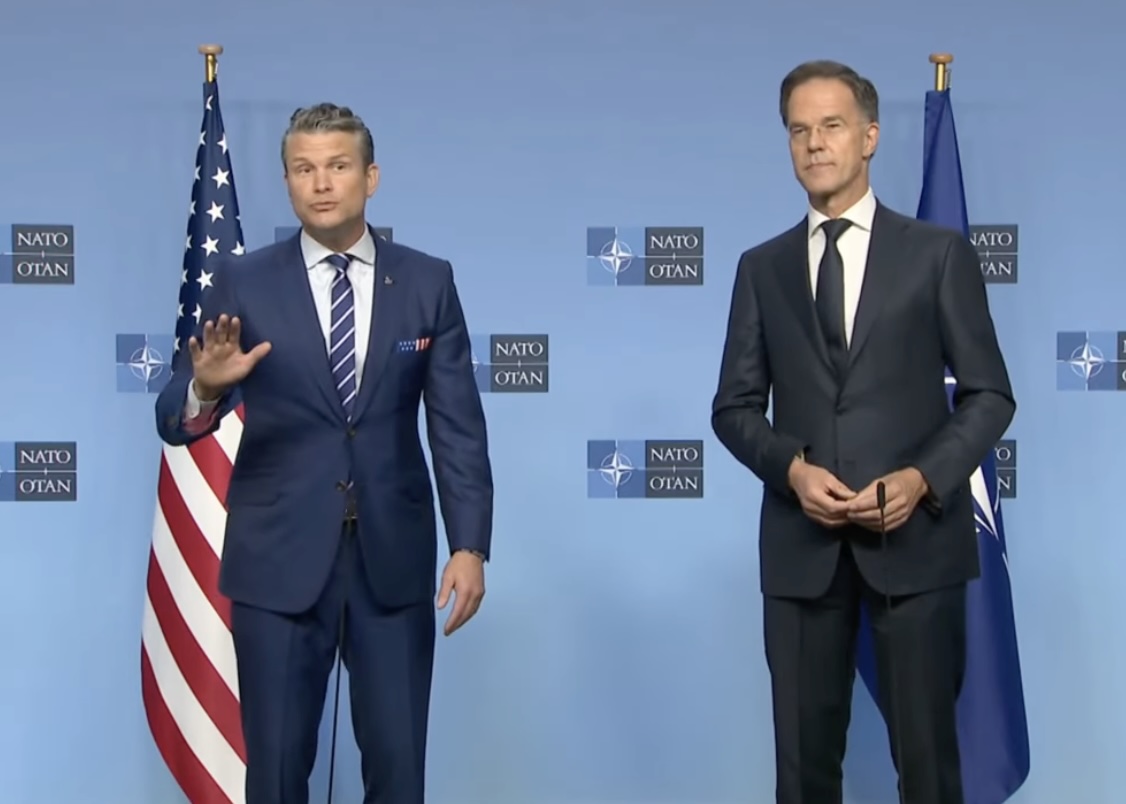


Speaking in Brussels alongside NATO Secretary-General Mark Rutte, U.S. Defence Secretary Pete Hegseth said Washington and its allies were prepared to “impose costs” if Russia continued its war, and argued that “peace is achieved through strength”. He urged capitals to channel more money into the Prioritised Ukraine Requirements List (PURL), the alliance-backed mechanism through which European and other partners buy U.S. arms for transfer to Kyiv. Reuters reported that around $2 billion has been pledged to date, short of the target set by President Volodymyr Zelenskyy.
PURL has become central to sustaining Ukraine’s supplies as direct U.S. donations have been wound down this year. Hegseth’s message in Brussels was that allies should close the funding gap rapidly so that commitments translate into “real capabilities” on the battlefield. Several countries announced fresh contributions on Wednesday, though overall European support has dipped in recent months.
Rutte, chairing a meeting of defence ministers and the Ukraine Defence Contact Group, set the discussion in a wider European security context. He said NATO and the EU were expanding joint work on counter-drone defences, part of a broader effort to harden the continent against aerial threats as incidents of Russian incursions and drone activity rise.
In parallel with the Brussels meetings, a senior Ukrainian delegation visited U.S. defence firms. Andrii Yermak, head of the Presidential Office, and Prime Minister Yuliia Svyrydenko met executives from Raytheon—manufacturer of the Tomahawk—as well as Lockheed Martin. The talks, confirmed by multiple outlets, focused on expanding cooperation across air defence, long-range strike and drones, ahead of an expected Zelenskyy–Trump meeting in Washington later this week. Reports say cruise missiles, including Tomahawks, are on Kyiv’s wish list; no decision has been announced.
U.S. officials have left open the possibility of supplying Tomahawks should diplomatic efforts fail, a stance that has drawn sharp reaction from Moscow. For now, the discussion remains contingent on allied financing and political approval routes, with questions outstanding over launch platforms and production lead-times.
Hegseth’s remarks mark a clear attempt to inject momentum into allied resourcing after a summer slowdown. The PURL framework—administered via NATO structures—bundles Ukrainian priorities, matches them to U.S. inventories and production lines, and seeks external funding to purchase at scale. The approach is intended to deliver predictability for Kyiv and industry while limiting the drawdown of U.S. stocks. Germany and several Nordic countries have signalled support for the model in recent months.
For NATO, the immediate focus remains air defence munitions, artillery ammunition and long-range precision strike, officials say, with the alliance also working on industrial ramp-ups to turn financial pledges into deliveries through 2026. Rutte has framed this as part of a broader “deterrence by denial” posture, buttressed by EU-NATO coordination on financing, regulation and procurement.
The diplomatic calendar now turns to Washington, where Zelenskyy is expected to meet U.S. President Donald Trump. Ukrainian officials are seeking to lock in multi-year production contracts and to widen joint defence ventures, while the White House has linked additional measures to Russian behaviour. Any move on Tomahawks would represent a step-change in Ukraine’s long-range strike options, but would carry escalation risks that allies will weigh carefully.
While rhetoric in Brussels was notably firmer, Wednesday’s developments stop short of announcing new U.S. transfers. The test for PURL will be whether pledges pledged this autumn convert into signed contracts and deliveries over the winter. For Kyiv, parallel engagement with Raytheon and Lockheed Martin indicates a push to secure both near-term stocks and longer-term production slots across air defence and strike systems.
If allies meet the funding targets outlined by Hegseth, Ukraine could see a steadier pipeline of munitions through 2026. Should they fall short, the war’s trajectory may continue to hinge on ad-hoc packages, exposing Kyiv to periodic supply gaps as Russia presses its campaign against Ukrainian infrastructure. Wednesday’s ministerial reinforced that the policy choice now sits with European capitals: fund the lists, or accept a slower tempo of deliveries into the new year.